- About MAA
- Membership
- MAA Publications
- Periodicals
- Blogs
- MAA Book Series
- MAA Press (an imprint of the AMS)
- MAA Notes
- MAA Reviews
- Mathematical Communication
- Information for Libraries
- Author Resources
- Advertise with MAA
- Meetings
- Competitions
- Programs
- Communities
- MAA Sections
- SIGMAA
- MAA Connect
- Students
- MAA Awards
- Awards Booklets
- Writing Awards
- Teaching Awards
- Service Awards
- Research Awards
- Lecture Awards
- Putnam Competition Individual and Team Winners
- D. E. Shaw Group AMC 8 Awards & Certificates
- Maryam Mirzakhani AMC 10 A Awards & Certificates
- Two Sigma AMC 10 B Awards & Certificates
- Jane Street AMC 12 A Awards & Certificates
- Akamai AMC 12 B Awards & Certificates
- High School Teachers
- News
You are here
Mathematical Treasure: Fermat’s Varia opera mathematica
The French mathematician Pierre de Fermat (1601–1665) is best known for his “Last Theorem,” proved in 1995 by Andrew Wiles, but he also made contributions to other aspects of number theory, the foundations of the calculus, and analytic geometry. For various reasons, including long periods of civil unrest in his relatively isolated home of Toulouse, many of Fermat’s results were not published until after his death. In particular, this 1679 volume was the first effort to bring together his significant works as well as his mathematical correspondence.
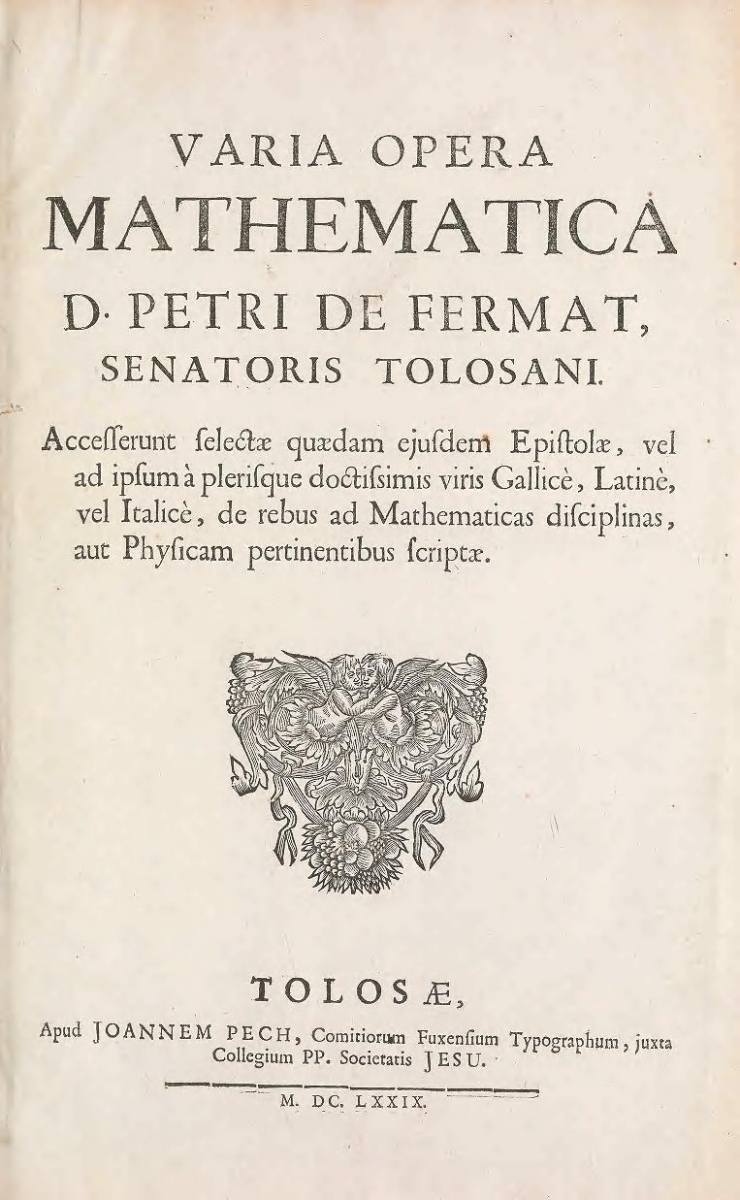
A portrait of Fermat that appeared in Varia opera mathematica.
Fermat’s work on analytic geometry that predated Descartes’ La géométrie first appeared in print in this treatise.
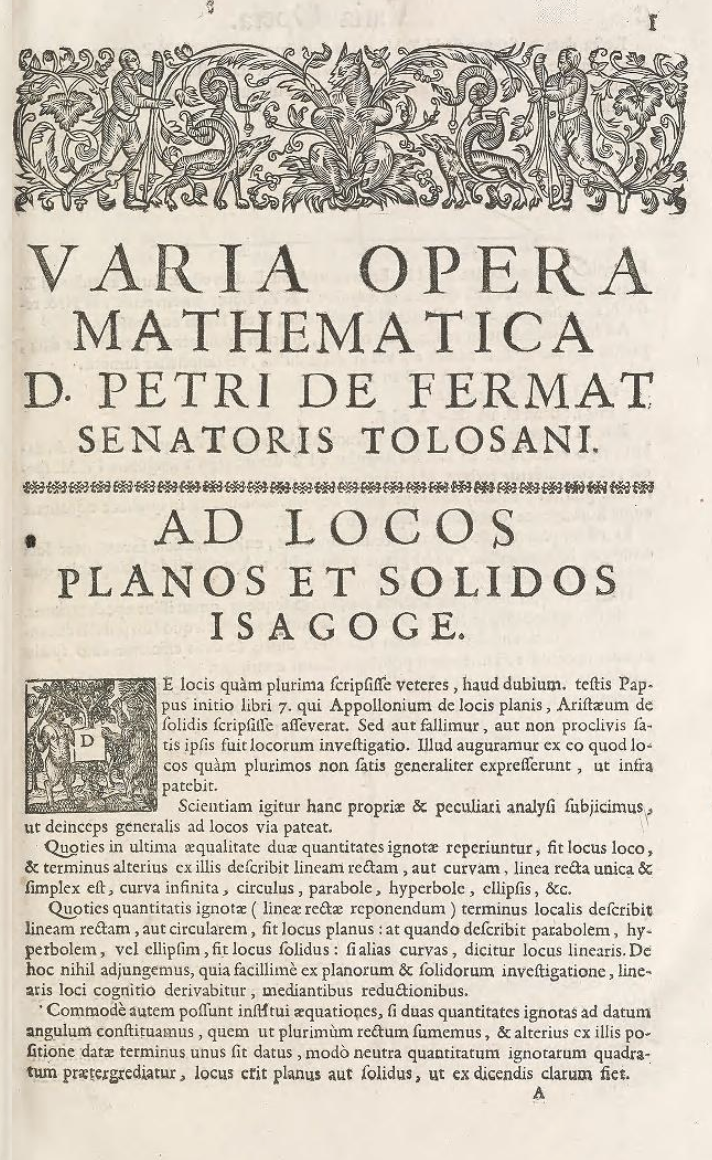
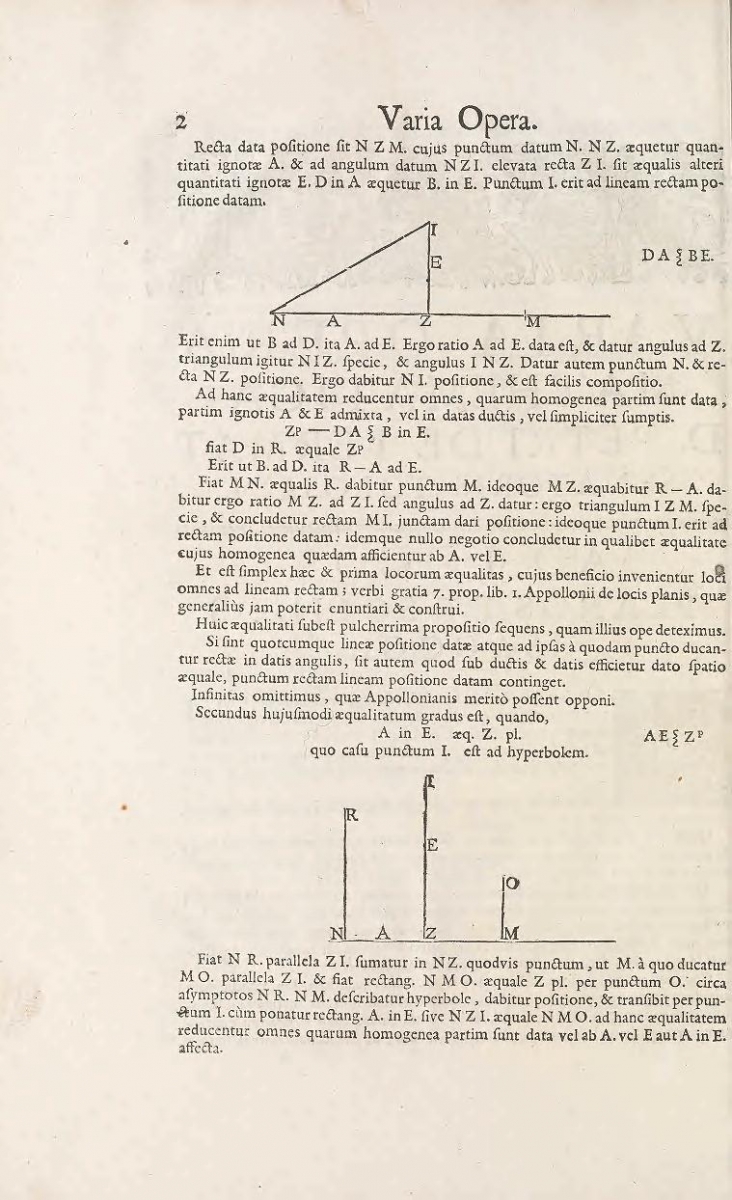
Much of the work recorded in Varia opera mathematics fits within the prehistory of the calculus.
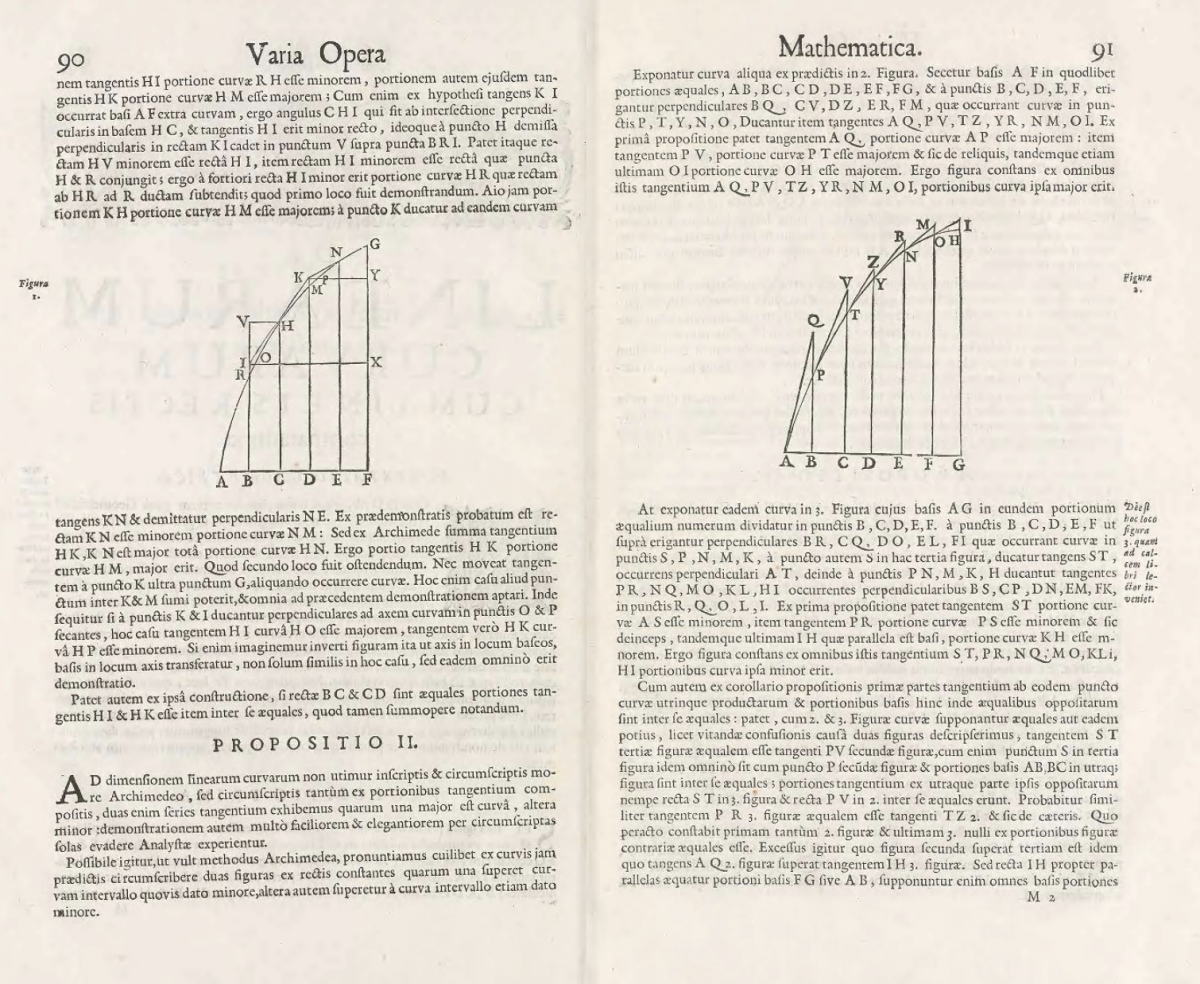
Some of Fermat’s correspondence is reprinted as well.
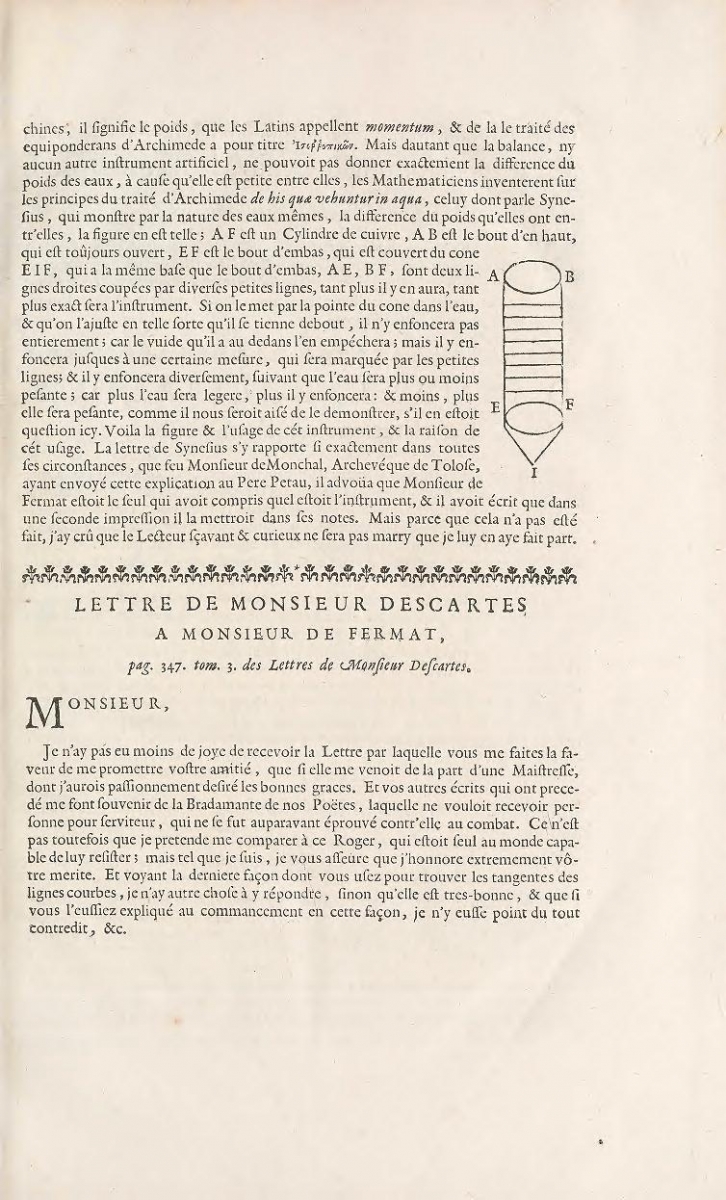
Images from the works of Fermat as they were edited by Paul Tannery in the 19th century can be viewed in this Mathematical Treasure.
A full digitization of the copy owned by the Dibner Library can be found in the Internet Archive as well as at the Smithsonian Institution Libraries website.
Frank J. Swetz (The Pennsylvania State University), "Mathematical Treasure: Fermat’s Varia opera mathematica," Convergence (March 2022)





